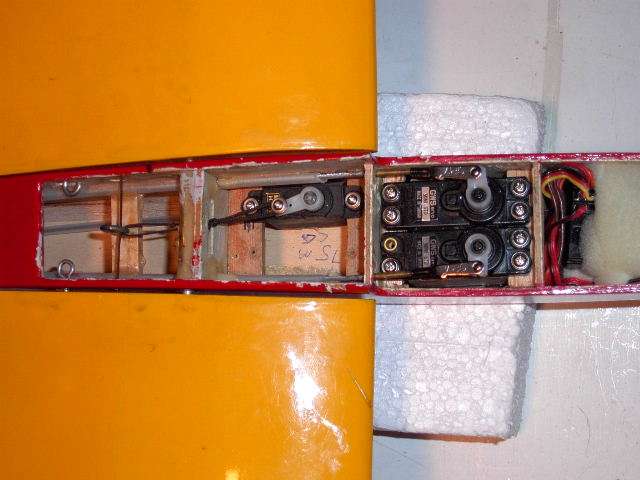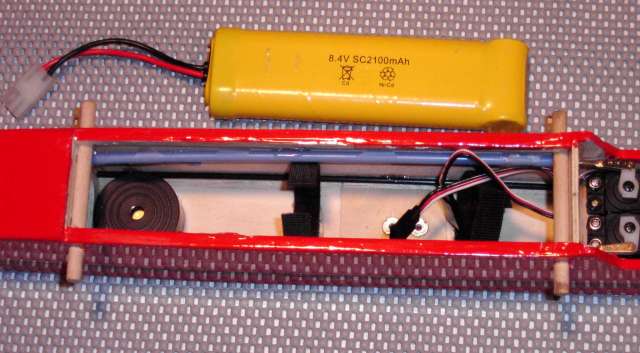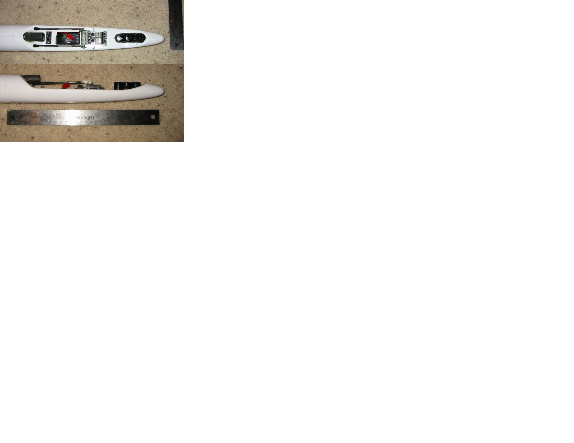| Author |
 Topic Topic  |
|
|
aeajr
477 Posts |
 Posted - 05/17/2008 : 08:16:10 AM Posted - 05/17/2008 : 08:16:10 AM

|
This original article appeared in the May edition of RC Soaring Digest:
http://www.rcsoaringdigest.com/pdfs/RCSD-2008/RCSD-2008-05.pdf
WHEN IS IT TOO WINDY TO FLY YOUR GLIDER?
By Ed Anderson
Aeajr on the forums
Updated December 2012
This discussion is going to be about flying a thermal duration glider in the wind. We are going to discuss how to make the glider more wind worthy and how the pilot can achieve a higher level of confidence when flying in the wind.
The discussion is focused on new pilots or pilots, who have achieved a level of confidence with their thermal duration glider, but have been hesitant to take it out on windy days. If you can't fly on windy days, that means fewer flying days. Let's see if we can add some of those days back to your flying schedule.
What do you consider a windy but flyable day? And what do you consider too windy to fly? Is 5 mph good? Is 10 mph too much? Would you set out the hi-start or the winch at 15 mph? Does a forecast of 20 mph winds seem like good weather to go hunting for lift?
If you launch using a hi-start or winch, wind will actually help you get higher launches. In this respect wind can be very helpful. As the glider climbs, the wind takes the glider up like a kite. When I first started flying gliders I was amazed by the height I could get with my Spirit and a hi-start when I had a 5-7 mph breeze as opposed to launching in calm conditions.
However, as the wind speeds started to approach 10 mph and the gusts got stronger, I had trouble handling the plane. My Spirit would be tossed around, giving me a feeling of being out of control. And landing was an adventure as ground turbulence goes up with wind speed. I found I was paying more attention to stability and less to lift indicators. This was not fun!
Even today, as a member of a glider club, when the wind forecast is for more than 10-mph winds, the turn out at the field is very small. So, is 10 mph too much wind for flying a glider?
Regardless of what glider you fly, there is no question that it is harder to penetrate up wind or to work the thermals that may be out there, when you are flying into a strong wind. And you will have to bail out earlier rather than risk getting caught down wind. As a result, your range of workable sky gets smaller.
After being grounded on too many windy days, I started to think I needed a new glider, a windy day glider. And, of course, it is true that some gliders handle in the wind better than others. But is that the only solution? Do we have to keep upgrading our gliders as we wish to challenge higher wind speeds? Read on and let's find out how to make whatever glider you are flying today, more wind worthy.
BUILD LIGHT - ADD WEIGHT LATER
Every experienced builder I have ever spoken to has told me to build light. They always told me that a light plane flies better. And this would seem to make even more sense when it comes to gliders, planes with no motors. The lighter the wing loading, generally the lower the sink rate. Overall, you can float longer and rise on lighter lift with a lighter plane. Of course there are other factors like airfoil and such, but on two identical planes in calm air, the lighter one will generally stay up longer.
But those light planes become like leaves in the wind when the gusts come up. Low wing loading and very slow flying speed leads to a plane that can not penetrate or that is hard to control or to land. The solution is to add weight.
By adding weight to your glider, what we call ballast, we cause several things to happen. First we increase the wing loading. If your glider weighs 40 ounces and has a wing loading of 8 oz per sq ft, by adding 8 ounces of weight, 20% of the glider's weight, we increase the wing loading by 20%. This will increase the flying speed of the plane allowing it to penetrate into higher speed winds.
I won't go into the math here, but I provide a link to a discussion on this topic. Based on the advice of experts, adding ballast to increase flying speed for better wind penetration will have a smaller impact on sink rate than just adding down elevator. You will lose less altitude flying faster with a heavier plane than you will by adding down elevator to a lighter plane in order to gain speed to penetrate into a strong wind.
When we add ballast to a glider we want to maintain the balance of the glider, so we typically add that ballast right over the center of gravity, the CG. This makes the plane heavier, but maintains the balance. And we typically add that ballast weight to the center of the fuselage, which makes the fuselage heavier, compared to the rest of the plane. This creates a damping effect, which makes the plane feel more stable, more controllable. Wind gusts hitting the side of the plane seem to push it less and the plane returns to a more stable flight path more quickly with less effort on your part.
Therefore, by adding ballast we gain two benefits, we gain flying speed for wind penetration, and stability to help us deal with the gusts and cross winds. Of course we will also increase the sink rate but our alternative is to leave the plane on the shelf and cut the lawn. It is a small price to pay for having a more wind worthy plane.
HOW MUCH WEIGHT SHOULD I ADD?
There are all sorts of engineering discussions that can come from the question of how much ballast under what conditions. I won't go into that here. What I will say is that the range of weigh you can add is probably more than you think. And the amount you add is very much a personal decision.
I am going to discuss ballast weight as a percentage of the weight of your glider in its ready to fly state. So, if your glider normally weights 30 ounces, then adding 10% would be 3 ounces. If it weighs 75 ounces, then 10% would be 7.5 ounces. It is not the actual number of ounces, but the % of the plane's weight that becomes important.
Some people like to shift the CG a little forward for stability when flying in the wind. That, again, is a matter of personal taste. I occasionally do this in very gusty conditions but otherwise I avoid it when as it makes the plane less sensitive to lift. For this discussion we want to keep the balance as you normally have it, we are just going to make the plane heavier.
As it turns out, adding 10% in ballast is not much at all. My suggestion is that you experiment with your glider, flying under your usual conditions. Add 10% and see how it flies. Notice the handling, the flying speed and the landing speed. You will have more energy retention causing the plane to land faster, so give yourself some extra room on those first few ballasted flights.
When I first tried this, I had to convince myself that adding 10-20% to my glider's weight would not cause it to drop out of the sky. Once I was confident of that, when the wind came up I would add that 10%-20% and found that it made a difference in how much wind I could handle.
In fact, on all but the most delicate gliders, adding 20% in ballast is quite reasonable. Some contest pilots, flying strong planes, have been known to add 50% or more ballast when flying in strong winds under contest conditions. I would not suggest you jump to something like right away, but realize that the range of ballast you can add can be quite broad.
My 3.4M Supra normally flies at 64 ounces. I have flown it with 32 ounces of ballast in a 25 mph wind. It flew great! Wind didn't bother it, I was able to catch a thermal and landed fine, just faster than normal. And that faster flying speed is what I wanted from adding ballast. But normally I add between 8 and 14 ounces and find that sufficent.
LOCK THAT BALLAST DOWN!
Be very careful to add your ballast right on the CG such that you do not upset the balance of the plane. And make very sure it is very well secured. Imagine a 20% weight shift while you are flying. This could make the plane unflyable, so make sure your ballast is very solidly mounted. And always put your ballast inside the plane. Tape may seem secure, but if it lets go, dropping 8 ounces of lead from 400 feet could do a lot of damage to a car or kill someone. Put the ballast inside!
On planes with fairly open areas over the CG, a ballast box can be constructed. This is a space that is sized to be directly over the CG, which will hold the ballast securely. Some planes work better with a tube that is fed from the front so ballast can be added or removed without removing the wing. In this approach the heavy metal slugs are added with lightweight spacers so that the weight is right over the CG.
Among the picture you see my red and yellow Sagitta 600 2M glider.

I created a box behind the spoiler servo area that can hold about 6 ounces of lead. I have also used coins for this purpose. Each quarter is about .22 ounces, so 5 quarters is about 1.1 ounces. After I add the weight I stuff foam in there to hold it all still. The box fully contains the weights so they can not move around in the plane.
You also see my Spirit 2M.

If you know the typical Spirit layout you see that I moved the servos forward creating an open area under the wing. There I added velcro to the floor of the plane as well as straps of velcro. In the photo below you see a large yellow battery pack that weighs 13 ounces or about 1/3 of the unballasted weight of my Spirit. The battery is just there for weight. Most of the time I use something smaller, but if I wanted to fly the Spirit in higher winds, this would let me do it.
Many foam gliders have hollow wing tubes that sit right on the CG. You can use a steel rod slipped inside the wing tube for ballast. It does not have to fill the tube. By varying the diamater of the rod you vary the weight. For my Radian, about 28 ounces typical flying weight, I have a 1/4" steel rod that weighs about 4.6 ounces or about 16% of the weight of the Radian. I find that sufficent for me for winds of 12 to 14 mph. Or I use it when I go slope soaring. I can use thicker rods for up to about 8 ounces but have not found the need. If it is that windy I switch to another glider.
I have used lead, battery packs, and similar items that could be solidly secured. I commonly add 4-8 ounces to my 2M planes when the wind gets over 10 mph. The glider does not float as well but it becomes more comfortable to fly so I am less likely to put it away just because a little wind came up. See what works for you.
One of the pictures below is of my Supra. In the shot below you can see the ballast tube on the left, sticking out from the fuselage.

Into this I can slide weights and slugs in order to ballast the plane. I have a brass ballast set, that weighs 35 ounces. I can add as little or as much as I like by replacing brass slugs with wood dowel slugs of the same size. I typically use between 8 and 14 ounces. I have a ballast pack that goes up to 35 ounces, or about 55%.
EXPERIMENT
My goal with this article is not to make you a master of ballast but to give you the confidence to experiment. Knowing that adding weight to your glider can actually make it fly better may be a new concept for you. Or you may have heard this but not understood the meaning.
Step up in small increments. A 10% weight increase is a good starting point. In fact the damping effect of adding that slug of weight in the center of the plane may be more valuable than any increase in glide speed. It won't hurt your float a lot but it might just be that little bit of extra stability that lets you keep flying when the wind comes up.
If you tend to shy away from 10 mph winds today, after you have become comfortable with ballasting your glider, you may look at 10 mph winds and feel that it is a good day to fly. If that happens, then I have accomplished my goal of giving you a few more flying days upon which you can enjoy flying gliders.
OTHER RESOURCES
This article is based on my personal experience as well as advice I have received from other pilots. It is also based on extensive reading. Of particular value are discussion topics on the forums. I have included a couple web links to discussions that I think will be helpful in your deeper understanding of this topic.
Feel free to post questions to these discussions. The participants in the discussion will be happy to help you achieve confidence in the wind.
The threads can be found here:
http://www.rcgroups.com/forums/showthread.php?t=843256
http://www.rcgroups.com/forums/showthread.php?t=780129
One final note. This discussion has been primarily around pure gliders flown off hi-starts and winches, however the principals of ballasting apply to all model airplanes. Whether you fly pure gliders, hand launched gliders, electric gliders or even power planes, if you want to be able to fly in more wind, try adding a little weight to your plane. You will be amazed by how much better the plane will handle in the wind.
THE CAP INDICATOR
I used to say that if it was too windy to keep my cap on my head, then it was too windy to fly. However as I have become more confident with my gliders and more bold with my ballasting, the days when it is too windy to fly are few and far between. The cap criteria still applies, but now I turn it around backwards when it is windy. If the wind can still knock it off my head, maybe I need add some ballast to the cap.
Clear skies and safe flying!
|
Best regards,
Ed Anderson
Long Island Silent Flyers
|
Edited by - aeajr on 09/24/2009 08:35:58 AM |
|
|
lincoln
49 Posts |
 Posted - 06/18/2008 : 11:40:30 PM Posted - 06/18/2008 : 11:40:30 PM

|
Even more important than ballast is the willingness to use a bit of down elevator when going into the wind, especially if you get into sink. It feels wrong because the glider is already going down. But it's better to sink a little faster and get upwind than it is to sink at medium speed, straight down. Obviously it's a matter of judgment what speed you should fly, but do experiment with a bit of nose down trim. A few clicks can make a big difference. (Some people with smooth hands may just hold the stick down a bit.)
Years ago, I once had another pilot pleading with me to help him get his model back upwind. I wanted him to do it because I wasn't used to the glider. I spent about 30 seconds telling him to put the nose down, but he wouldn't. I took it, put the nose down a bit, got about 100 yards upwind, and decided to mush it in, because I was used to flying a glider that mushed very well. BAD mistake. It stalled and fell. Oh well. I've had more experience since then. |
Lincoln Ross |
 |
|
| |
 Topic Topic  |
|
|
|

